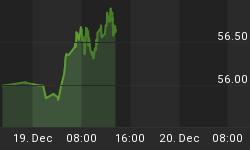It's May 1 and time for the "sell in May and go away" chatter to pick up. Seasonal patterns are worth respecting, but you should also look for the market to confirm the seasonal tendencies. Since stocks tend to go up when central banks print money, creating a fear of inflation, and stocks tend to go down when deflationary/default fears pick up, commodities offer a good way to monitor the health of the markets.
Selling in May has worked quite well the last two years. Therefore, a comparison of 2012 to the past two years is a worthwhile exercise. The chart below shows a weekly chart of the S&P 500 (top portion) and commodities (CRB Index) in the middle. The orange arrows point out the peaks in 2010 and 2011. The red vertical lines allow us to compare the S&P 500, CRB Index, and the two technical indicators, MACD and RSI. Detailed remarks can be found below the chart relative to the other notations.

The main takeaways from the chart above:
- Using MACD and RSI, 2010 appears to be much more similar to the present day than 2011.
- The two candlestick formations above the purple arrows (near A1 and A2) have a similar "bullish engulfing" look. The pattern was a head fake for commodities in 2010, which is something we need to be mindful of in 2012.
- In 2010, MACD failed to experience a bullish cross (near B1/pink arrow), which occurs when the black line moves above the red line. Therefore, if we experience a bullish MACD cross in 2012, it would be a good sign for risk assets. MACD at B2/2012 still looks similar to B1/2010, which is a yellow flag for risk in the present day.
- A good way to use RSI is any move above 57 during the week is a bullish signal - a weekly close over 55 is also bullish. Anything below those figures is worthy of some skepticism. RSI, as of Monday's close, sat at 44 or still in neutral territory.
- The recent break above the pink trendline by the CRB Index and the subsequent support shown by the same trendline gives the commodity bulls some hope.
Based on our market models, the bulls remain in control, but they look vulnerable. Numerous weekly charts have weak MACDs, an indication of slowing momentum. There is nothing wrong with a MACD slowdown, but the margin for error to reach more concerning MACD levels is somewhat thin.















